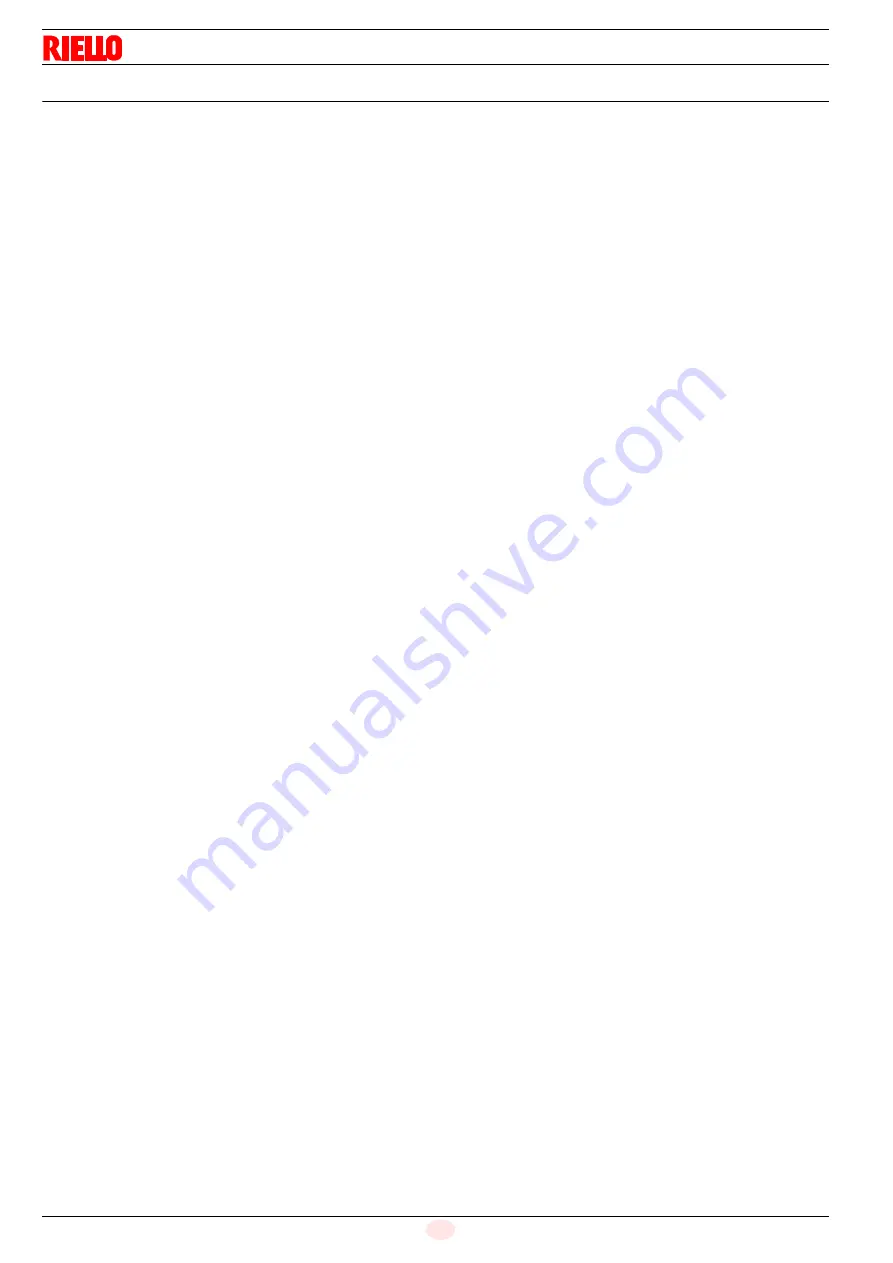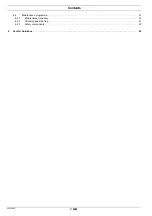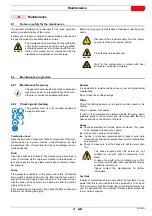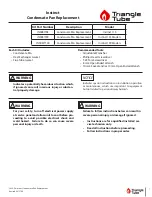
Information and general warnings
20153653
6
GB
2.3
Guidance for the use of biofuel blends up to 30%
Introduction
With increasing focus on renewable and sustainable energy re-
quirements, biofuel usage is set to increase. The manufacturer is
committed to promoting energy conservation and the use of re-
newable energy from sustainable resources including liquid bio-
fuels, however there are some technical aspects that must be
considered at the planning stage of using such fuels to reduce the
potential for equipment failure or the risks of fuel leakage.
Liquid biofuel is a generic description used for oil that can come
from numerous feed stocks including recycled cooking oils.
These types of oils have to be considered and treated differently
from standard mineral or fossil fuels, as they are generally more
acidic, hydroscopic and less stable.
Due to this, a holistic approach is needed for the specification of
the liquid biofuel, the storage of the fuel, its oil supply line and an-
cillary equipment, and very importantly the oil filtration and the
burner itself. The specification for FAME (Fatty Acids Methyl Es-
ter) liquid biofuel is critical to reliable equipment operation.
It is a minimum requirement that the fuel blend (up to 30% bio) is
obtained with light oil in accordance with the relevant EN stand-
ards, regional regulations and FAME in accordance with EN
14214. It is also important that the fuel blends meet the environ-
mental operating condition requisites of the relative EN stand-
ards.
When choosing your oil products where you know biofuels will be
in use, please make sure that a bio-compatible burner and/or
components have been supplied. If an existing burner is to be
used with a liquid biofuel then a kit may be required to make it
compatible and the guidance notes enclosed concerning oil stor-
age and filtration must be adhered to. The end user is responsible
for the thorough verification of the potential risks associated with
the introduction of a biofuel blend and the suitability of the appli-
ances and installation applicable.
Irrespective of any warranty given by the manufacturer in relation
to normal use and manufacturing defects, when fuels not meeting
the relevant standards are used, or where fuel storage issues
have not been addressed correctly, or the equipment used is not
compatible, if failures occur which are directly or indirectly attrib-
uted to such issues and/or to the non-observance of this guid-
ance, then no warranty or liability is implied or accepted by the
manufacturer.
2.3.1
Information and general instructions
To ensure consistency, the supplier of the fuel must be able to
demonstrate compliance with a recognised Quality Control and
management system to ensure high standards are maintained
within the storage, blending and delivery processes.
The installation oil storage tank and its ancillaries must also be
prepared BEFORE liquid biofuel is introduced.
Checks and preparation should include:
For new installations, make sure that all materials and seals
in the oil storage and supply line to the burner are compati-
ble with biofuels. For all installations, there must be a good
quality bio-compatible oil filter at the tank and then a sec-
ondary filter of 60 Microns protecting the burner from con-
tamination.
If an existing oil storage tank is to be used then in addition to
the materials checks as detailed above, it will be essential
that the tank is first inspected for condition and checked for
water or other contamination. The manufacturer strongly
recommends that the tank is cleaned and oil filters replaced
prior to biofuel delivery. If this is not completed then due to
the hydroscopic nature of biofuel, it will effectively clean the
tank, absorb water present which in turn will result in equip-
ment failure that is not covered by the manufacturer's war-
ranty.
Depending on the capacity of the oil storage tank and oil
usage, fuels may remain static within the tank for some con-
siderable time and so the manufacturer recommends that
the oil distributor is consulted regarding the use of additional
biocides within the fuel to prevent microbial growth from
occurring within the tank. The manufacturer suggests that
fuel suppliers and or service companies be contacted for
guidance on fuel filtration. Special attention should be
applied to duel fuel applications where oil may be stored for
long periods of time.
The burner must be set according to the appliance applica-
tion and commissioned checking that all combustion param-
eters are as recommended in the appliance technical
manual.
The manufacturer recommends that the in line and burner oil
pump filters are inspected and if required replaced at least
every 4 months during burner use, before the burner start-
up following a long period of discontinue operation and even
more frequently where contamination has occurred. Particu-
lar attention is needed when inspecting and checking for
fuel leakages from seals, gaskets and hoses.
2.3.2
Product Disclaimer Statement
CAREFULLY READ THE FOLLOWING DISCLAIMER. YOU
ACCEPT AND AGREE TO BE BOUND BY THIS DISCLAIMER
BY PURCHASING BIO-COMPATIBLE BURNERS AND/OR
COMPONENTS.
Although the information and recommendations (hereinafter “In-
formation”) in this guidance is presented in good faith, believed to
be correct and has been carefully checked, the manufacturer
(and its subsidiaries) makes no representations or warranties as
to the completeness or accuracy of the Information. Information
is supplied upon the condition that the persons receiving same
will make their own determination as to its suitability for their pur-
poses prior to use. In no event will the manufacturer (and its sub-
sidiaries) be responsible for damages of any nature whatsoever
resulting from the use of or reliance upon Information. Other than
set forth herein, the manufacturer (and its subsidiaries) makes no
additional warranties with respect to the bio-compatible burner,
either express or implied, including that of marketability or fitness
for a particular purpose or use.
In no event shall the manufacturer (and its subsidiaries) be liable
for any indirect, incidental, special or consequential damages in-
cluding, without limitation, loss of profits, damages for loss of
business profits, business interruption, loss of business informa-
tion, loss of equipment, or other pecuniary loss or compensation
for services whether or not it is advised of the possibility of such
damages.
With the exception of injuries to persons, the manufacturer's lia-
bility is limited to the customer's right to return defective/non-con-
forming products as provided by the relevant product warranty.









































